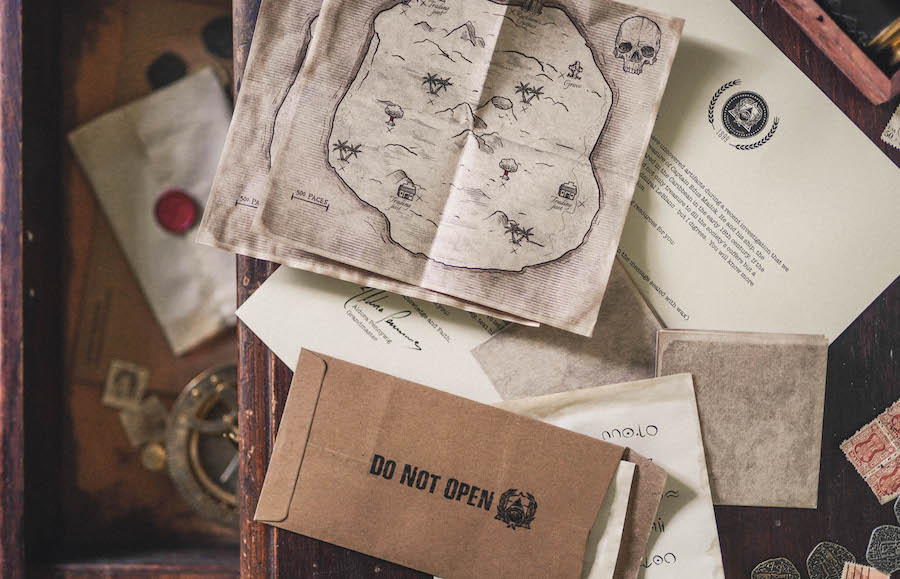We design both escape games and mail-order alternate reality games. In both, providing hints is essential to smooth gameplay.
Our Guidelines for Creating Hints in Escape Games
- Hints must be straightforward. People are using hints because they feel stuck. We’ve been in situations where we ask for a hint and get a riddle back or something cryptic. For us, this is not fun! We’re already stuck, we just want a way to move forward and enjoy more of the game. As designers, we aim to create straightforward hints that help things click in the players’ heads so they feel smart and can own the win.
- Nudge, Don’t Push. The fun in playing escape games or a solve-the-mystery box games is that you get to be the hero – and solving puzzles is a big part of it. Don’t take away the joy by giving away the solution. Create small, incremental hints that nudge a player towards the resolution. Most times, all a player needs is to be pointed in the right direction.
- Provide the Answer. For us, there’s nothing more frustrating than a game that doesn’t give solutions to a puzzle. Sometimes a puzzle doesn’t click, and it’s nice to know that you can get the solution and move on. This is also especially important when there can be small errors that keep a group from getting the correct answer. We’re not a fan of counting puzzles, but this is a great example of a game element that can easily frustrate players if there’s human error – give players a way to check their work if they feel that they’re doing everything right.
- Test Your Hints. This is one we learned as escape room designers. A slight change in wording can drastically affect the success of a hint. Test them out and make sure that what you give works. In general, you don’t want to have to give too many hints on any given puzzle, so testing can help you with this.
- Don’t Go Off Book. This is for escape games. We have found that if we create a comprehensive list of hints that we’ve tested, 95% of the time, they work perfectly. Only a tiny portion of games require a custom hint. Beware of going off book – We’ve see time and time again that when we make up hints on the fly, we often confuse players more. Only do this if absolutely needed.
- Stay on Theme and In Story. Our hints for physical escape rooms are all in the tone of the remote character requesting the players assistance. This helps players stay immersed in the game. It’s simple to tweak hints to feel like they are part of the story. Just imagine who is sending the hints and why – that should get you started on finding the right tone.
- Make it Fast! When a player asks for a hint, they are stuck and ready for help. Game designers need systems to get the hints to players as quickly as possible. It goes without saying that game masters should be attentive to keep the game flowing well. If you are creating an online or paper based mystery game, make sure that your hints can be easily accessed. With Society of Curiosities, we have a hint tab that players can access at any time. We chose to go this route instead of in character texts or emails to avoid any type of tech slowdown that might frustrate players.
Designing Hints for Monitored Games vs Unmonitored Games
The biggest difference we see in crafting hints for monitored over unmonitored games is the flexibility and ability to step in and and nudge a group of players if needed. We know that unrequested hints is a bit controversial, but a game master knows when players have gotten in their heads or are reaching frustration. If there is a game master, they can send a nudge to refocus players. We do this mainly with newer players. Often if we are chatting with players before the game and hear that they are enthusiasts, we will ask their unasked for hints preference. If they prefer to not be given hints, we will send a time check to push them to ask for a hint.
With unmonitored games, it’s the players that determine when they need a hint. We try to encourage them to use hints before they get frustrated. It’s important to us to emphasize that hints are created for use because the game is challenging and using them is part of the game, not a weakness. In some cases, we even program our in game characters to prod players into taking a hint.
Want to take a peek into our escape rooms? See our before and after design pics.


